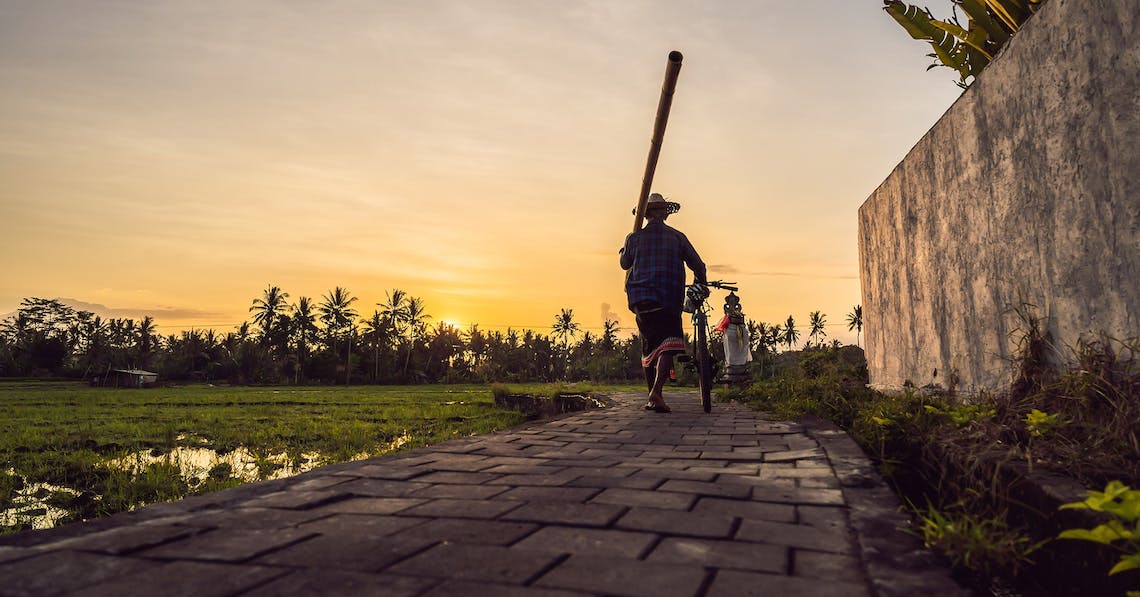
It all started back when Oat studied architecture at Chiang Mai University. He loved cycling to class, but as is the case for many designers and tinkers, bicycles in the market simply weren’t good enough for him. And so he began taking old bicycles apart and rebuilding them according to his whims. But Oat didn’t want to deal with complicated welding processes, so aluminum and Chromoly were out of the question as materials.
And so, Oat made a rather unique decision: he would try to construct bicycles out of bamboo, one of the fastest-growing and most renewable plants in the world. He began by handpicking pieces of bamboo from various sellers. Today, he selects and cuts all the bamboo himself from Mae Rim Bamboo Plantation near his friend’s house. After the bamboo is cut, it is thoroughly washed to get rid of the starch and soaked in Borax to keep out termites and other bugs. The drying and ageing process takes about three weeks to a month, and sometimes up to five years.
Oat is serious about his work and highly detail oriented; modest, but quietly passionate about design. When we arrive at his house cum studio near Wat Suan Dok, he’s hard at work polishing a sample mountain bike frame while his big black dog, Dam, looks on, occasionally jumping up for a sloppy kiss.
Unlike bamboo bike makers in North America who use South African bamboo, Oat doesn’t have to smoke or heat treat the bamboo before building with it. Once an order comes in from a client, the bamboo is simply cleaned and cut to size based on one-to-one patterns Oat finds online to make sure the frame fits the rider perfectly. The frame’s joints are made from aluminum by local fabrication shops, and some of the parts that require higher precision are waterjet cut by an experienced machinist.
The bamboo and aluminum joints are wrapped with hemp rope and covered in epoxy, a process that takes two to three days per bike. Then comes the hardest part, according to Oat: sanding the epoxy, which can take up to a week and often requires days of polishing tight corners by hand in order to get a smooth finish. Then the “Brown BIKE” vinyl decals are applied on both sides before the frame is covered in clear coat.

Sometimes, frames get flame torched for darker colour highlights – it all depends on the style preferences of the customer.
From the day the order is placed, a shiny new custom frame is ready in about a month, and costs around 10,000 to 15,000 baht. A complete assembled bike typically weighs 13 to 15 kilograms, depending on other components chosen.
Brown BIKEs also come with accessories such as saddle bags, handlebar bags and panniers, all handmade by Oat and inspired by his other serious hobby: trekking. The ever-crafty Oat has been making canvas backpacks for himself and his friends for their hiking and trekking trips for years, which led his friends and customers to request bike accessories as well.
As Citylife’s resident cyclist, I got a chance to take one of Oat’s bikes for a test ride. Knowing it would be heavier than the typical performance road bicycle, I expect it to ride like a hard tail mountain bike. I was wrong! The bamboo bike was smooth and compliant, an excellent commuter bike, and surprisingly handled road bumps and absorbed shock better than my 1978 Peugeot Triathlon.
Plus, I was the envy of every hipster in sight.

